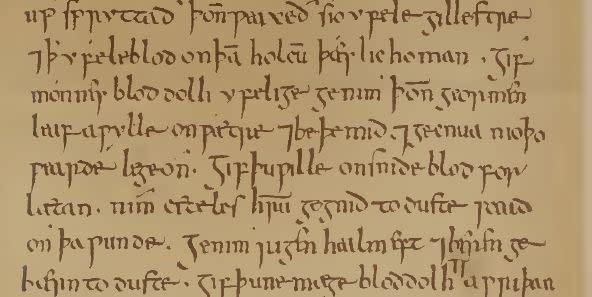Hot New Medicine: This 1,000-Year-Old Mixture of Garlic, Onion, Wine, and Cow Bile

A mixture of garlic, onion, wine, and cow bile showed results at clearing biofilm infection.
The search for new antibiotics is even more critical for treating insidious, long-lasting biofilms.
Separately, the ingredients didn't work, even if just one was removed.
Scientists are studying a millennium-old medicinal recipe they say might be able to kill some antibiotic-resistant bacterial structures: onions, garlic, a splash of wine, and some cow bile. The ingredients sound like a house vinaigrette until you get to, well, the cow bile.
Researchers have known the mixture can kill Staphylococcus aureus, the bacterium responsible for most of what we call “Staph infections.” Now, a new paper shows it can also, figuratively, “cut through” stubborn and difficult-to-treat biofilm infections.
⚗️ You love weird science. We love weird science. Let's get weird together.
Buckle up for something gross. A biofilm infection is one where the bacteria have grown into a “mucuslike matrix of carbohydrate” (a tough day for the writers at Encyclopedia Britannica) that sticks to the infected wound or area. Biofilm’s opposite term is planktonic, an individual organism—a word formed from the sea creatures that, in turn, is from the Greek for to wander or drift. And a biofilm is greater—grosser, stickier, more dangerous, and more insidious—than the sum of its planktonic parts.

That makes it all the more exciting that “Bald’s eyesalve,” named because of its source in the medieval medical text Bald’s Leechbook, has been able to penetrate the film. “Biofilms are much harder to treat due to reduced penetration of antibiotics through the extracellular matrix and the enhanced tolerance of biofilm-grown cells to many in-use antibiotics,” the researchers explain:
“Non-healing, infected foot ulcers, which can be a complication of diabetes, provide an especially sobering example. [...] Despite the widely understood problems of treating biofilms, Bald’s eyesalve was also able to significantly reduce viable cell counts in biofilms of S. epidermidis and MRSA and was able to completely eradicate biofilms of S. aureus Newman, A. baumannii and S. pyogenes, in an established soft-tissue wound model.”
None of the ingredients works alone, but in mixture, they're effective. Removing the wine, for example, reduced the effectiveness a lot despite wine’s relatively low levels of the antimicrobial agents scientists believe make this mixture effective. And only by exhaustively testing the mixture can scientists begin to design a “clinical deployment” for patients.
“It could be that the conventional process for developing drugs may miss key aspects of those herbal remedies which could be effective against biofilms,” the researchers speculate. “Conventional drug development calls for the isolation of single active compounds, whereas historical medicine usually calls for combinations of whole plants (and other natural materials).”
📩 Make your inbox more awesome.
The scientists used a total of 75 different mixtures, which they made the traditional way.
“The outer skin of the garlic and onion was removed. The garlic and onion were finely chopped, and equal volumes of garlic and onion were crushed together using a mortar and pestle for 2 min. The crushed onion and garlic were then combined with equal volumes of wine and bovine bile salts.”
Since there’s a translation disagreement from the original old language of the Leechbook, they made some dual batches using both onion and leek.
Here’s the key motivator for this particular experiment: Scientists already knew the salve mixture showed results with killing many kinds of dangerous bacteria, but they didn’t know how those results scaled up to a more ingrained, established biofilm infection situation. And what they found is that the mixture worked on many of the bacteria in biofilm form, but not all.
“Our work highlights the need to explore not only single compounds but also mixtures of natural products for treating biofilm infections and underlines the importance of working with biofilm models when exploring natural products for the anti-biofilm pipeline,” the scientists explain.
You Might Also Like

